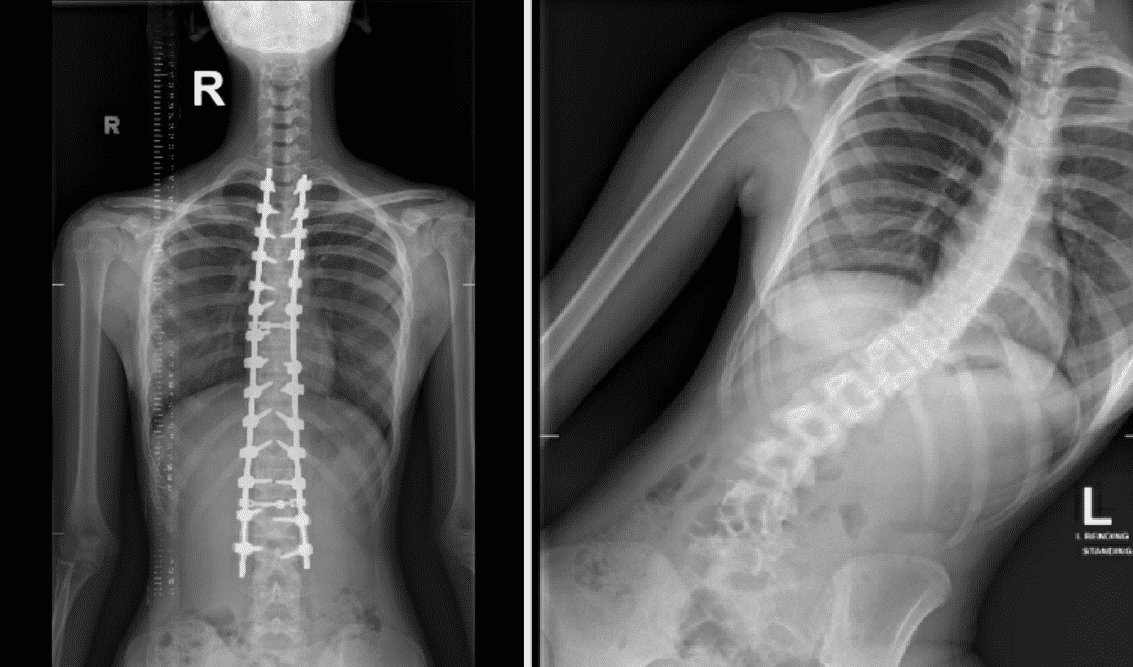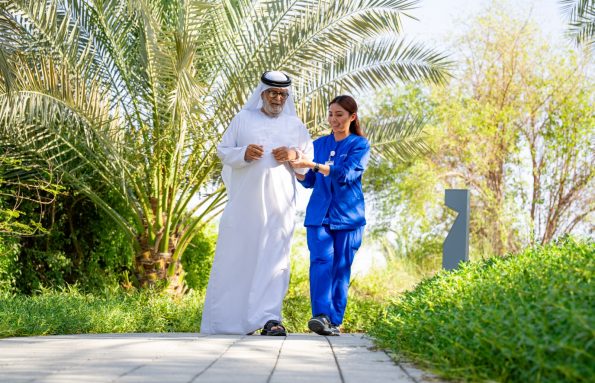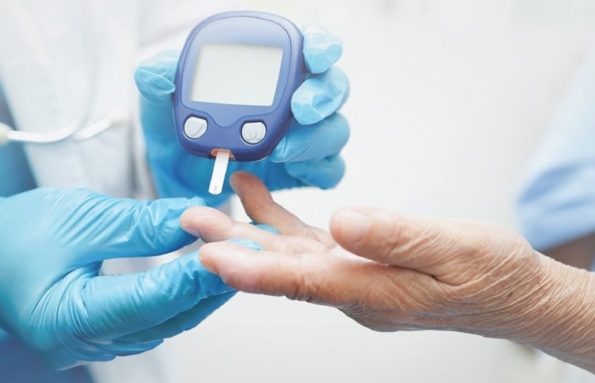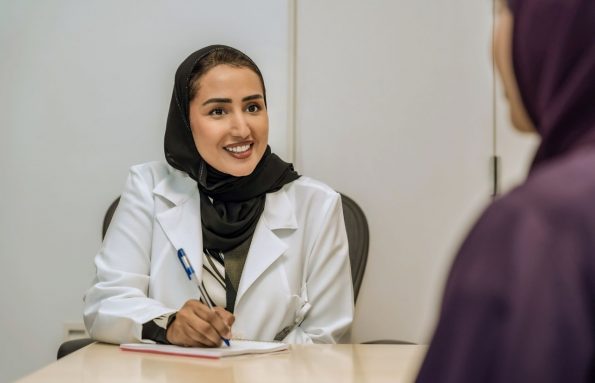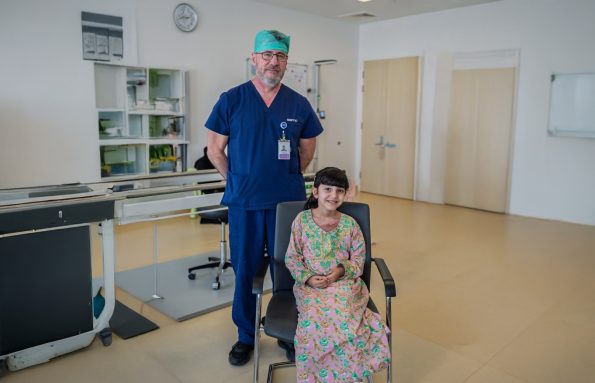First scoliosis surgery performed at SSMC completed in record time, after extensive planning with multidisciplinary team
Abu Dhabi, United Arab Emirates. September 5, 2021: Sheikh Shakhbout Medical City (SSMC), one of the UAE’s largest hospitals for serious and complex care and a joint-venture partnership between Mayo Clinic and Abu Dhabi Health Services Company (SEHA), has safely completed the hospital’s first and successful complex thoracolumbar scoliosis deformity correction on a 16-year-old female patient, Hoor Abu Baker Youssef Elnayed. Scoliosis surgery is typically performed at much larger centres due to its extremely complex nature. SSMC is the first health care centre in Abu Dhabi island to conduct the complex surgery, making it one of only three facilities in the UAE performing the procedure. The surgery was led by
Dr. Charbel Daoud Moussallem, a seasoned orthopedics and spine surgeon at SSMC with extensive experience in the region and in the US having completed a Spine Surgery Fellowship at Mayo Clinic in Minnesota, with the assistance of SSMC Orthopedics Specialist Dr. Mahmoud Al Cheikh Ahmad. The Orthopedics team safely performed the procedure at SSMC in only three hours, achieving anatomical correction using neuromonitoring with minimal blood loss. Dr. Moussallem said: “The team had undergone an extensive two-week period of pre-operative planning which – after conducting a mock surgery and doing consultations with a multidisciplinary team – we had factored in three hours of surgical time. Decreasing surgical time meant that the patient was healthy; it also means less blood loss and less risk of paralysis. We were very pleased with the outcome.” The extent of the surgery was significant. The team conducted T2 surgery, just below the patient’s cervical spine to the lumbar spine, which corrected 100% of her spine. This means that the team managed to achieve normal alignment, which resulted in a completely straight back. The patient was encouraged to walk the next day and required a few days in the hospital for recovery. After that, the surgical sutures were removed approximately three weeks post-surgery. The patient resumes her daily routine three to six weeks after the procedure, including physical activities except for contact sports.
“It is imperative to address scoliosis issues, especially at a younger age,” continues Dr. Moussallem. “In complex or severe cases, scoliosis surgery becomes extremely complicated once patients start entering their twenties. Until a patient gets surgery, they also typically suffer from pain and severe self-esteem issues because of the aesthetic effect of scoliosis on the body. A serious health issue caused by scoliosis that can lead to death is the progressive loss of their respiratory status due to the distortion of the chest wall, the ribs and the rotation of the dorsal spine, which impacts their lung capacity and causes their respiratory status to go into decline year after year.” There is no proven or direct cause for scoliosis, but multiple factors might cause the development of the condition. These are typically divided into four sub-categories: congenital, meaning that a patient was born with the condition; idiopathic, where degeneration happens spontaneously over time; degenerative, where scoliosis develops due to old age and osteoarthritis; or neuromuscular, which, for example, can develop in someone with cerebral palsy. The patient operated on at SSMC was an idiopathic case.
Hoor said: “Discovering my scoliosis was a very daunting experience, but I was so relieved after my procedure was completed and my pain continues to lessen with each day. My condition had made me feel self-conscious and now I can have more confidence going out into the world. I trusted Dr. Mousallem and Dr. al Cheikh Ahmad because they were with me in every step of the way, being supportive and positive, and made me feel reassured because of their expertise and their level of prepareness. I’m very grateful.” Dr. Mousallem concluded: “The successful completion of this extensive procedure was only possible due to a well-coordinated, multidisciplinary approach. This involved the Operating Room team that supported the pre-operative planning for the procedure, the Anaesthesia team which ensured complex muscle relaxation and reversal at different times during the surgery with tight blood pressure control and adequate spinal cord perfusion; along with the Radiology team for x-ray control. The patient has successfully come through the process and is back to living her daily life.”

